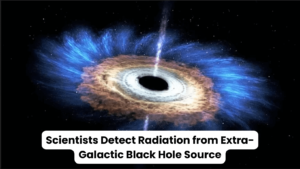Introduction:
Researchers from the Indian Space Research Organization’s (ISRO) U. R. Rao Satellite Centre (URSC) and the Indian Institute of Technology Guwahati (IITG) have accomplished a remarkable achievement by identifying radiation coming from an extra-galactic black hole source.
This ground-breaking discovery, which was made possible using X-ray polarimetry, sheds light on characteristics of extragalactic black holes that were previously unknown, thereby providing insights into the fundamental processes that lie beneath the surface.
Large Magellanic Cloud (LMC) is being investigated.
The radiation originates from the neighborhood of an extragalactic black hole that is located in the Large Magellanic Cloud (LMC), which is a smaller partner galaxy to the Milky Way.
This is the first time that such emissions have been found using X-ray polarimetry, and it represents a big step forward in the process of comprehending the mysterious nature of black hole origins.
What is LMC X-3?
One of the most important aspects of this finding is the binary system that is referred to as LMC X-3. This system is comprised of a black hole and a regular star that is significantly larger, more massive, and more intense than the Sun.
Since its discovery in 1971 by an X-ray telescope that was circling the Earth, LMC X-3 has been the topic of research for many years.
The Imaging X-ray Polarimetry Explorer (IXPE), a pioneering mission that was launched by NASA in 2021 and was built exclusively to explore the polarization of X-rays from astronomical objects, is responsible for the current discovery that has been made.
Insights Gained Through the Use of X-ray Polarimetry
IXPE was utilized by the researchers from IITG and URSC in order to analyze the X-ray polarization features of LMC X-3, which led to the establishment of this spacecraft as an excellent cosmic laboratory.
The findings are characterized by the identification of considerable polarized emissions, which are thought to be the consequence of mixed direct and/or reflected emissions from an environment that is partially ionized containing a disc formation.
A more in-depth comprehension of emission processes and object geometry can be attained through the utilization of this innovative method that makes use of X-ray polarimetry.
An Examination of Spin and Characteristics of the Source
In addition to the findings on polarization, the researchers also measured the spin of the black hole at the same time.
Through the examination of data obtained from the Neutron Star Interior Composition Explorer (NICER) Mission and the Nuclear Spectroscopic Telescope Array (NuSTAR) Mission, the researchers came to the conclusion that the black hole appears to rotate in a manner that is only slightly accelerated.











